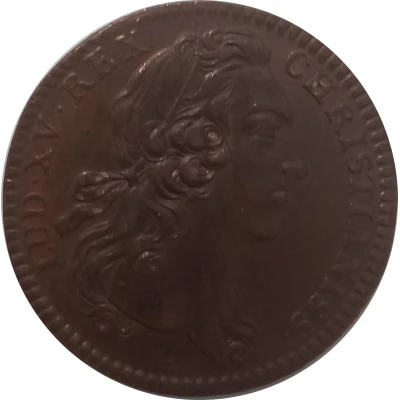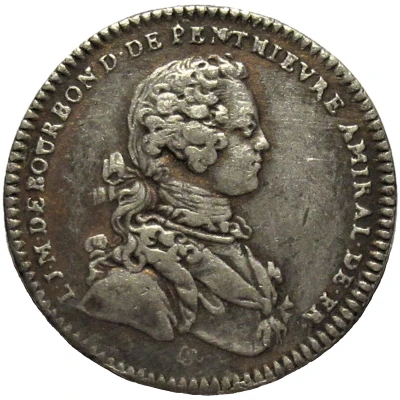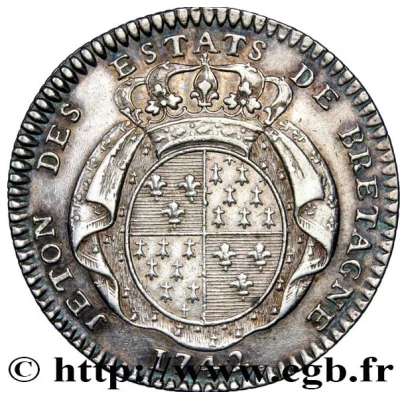Reverse
Noah's Ark in the midst of the waters. Above, a dove holding an olive branch.
Lettering: IMMERSABILIS. UNDIS ; À L'EXERGUE : TRESOR. ROYAL. 1742.
Edge
Plain
Comment
The early Capetian kings settled their personal affairs themselves, using a chancellor and four Ministers of the King's Household: the Seneschal, the Constable, the Grand Bouteiller and the Grand Chambrier. The Grand Bouteiller managed the royal treasury with the Grand Chambrier. Under Philip IV, the Chambre des Comptes was created, and in 1311, the Superintendent of Finances was assisted by a Treasurer. Nevertheless, the Royal Treasury and the Public Treasury continued to merge until the reign of Charles V. Under Charles VII, the number of Treasurers was increased to four, and they were responsible for drawing up the revenue budget. Under François I, the kingdom was divided into sixteen jurisdictions, each headed by a Receiver General and centralized by a Treasurer of Savings.
This is an automatic translation. The original text is:
Les premiers rois capétiens réglaient leurs affaires personnelles eux-mêmes en faisant appel à un chancelier et à quatre Ministres de la Maison du roi : le Sénéchal, le Connétable, le Grand Bouteiller et le Grand Chambrier. Le Grand Bouteiller gérait le Trésor royal avec le Grand Chambrier. Sous Philippe IV, la Chambre des comptes apparaît et en 1311, le Surintendant des finances est assisté d'un Trésorier. Trésor royal et Trésor public se confondent néanmoins jusque sous Charles V. Sous Charles VII, les Trésoriers sont portés à quatre et sont chargés d'établir le budget des recettes. Sous François Ier, le royaume est divisé en seize ressorts avec un Receveur général à leurs têtes et un Trésorier de l'Épargne qui centralisait le tout.






